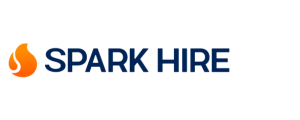
How to Choose Video Interview Software: 2025 Buyer's Guide
Oct 24, 2025 |
The shift to remote and hybrid work isn't just a trend; it's the new reality. In this landscape, video interview software has evolved from a convenient tool to a non-negotiable asset for competitive hiring. Companies that fail to adapt risk losing top talent to more agile, tech-forward competitors.
However, choosing the wrong video interview platform can be just as damaging, leading to a poor candidate experience, wasted resources, and potential security vulnerabilities. This 2025 buyer's guide is your definitive resource. We'll provide a clear framework, a video interview checklist, and top tool comparisons to help you invest in a solution that empowers your hiring team and delights your candidates.
TL;DR
- Crucial for Modern Hiring: The right video interview software is essential for finding top talent in a remote-first world.
- Must-Have Features: Prioritize live and one-way video interviews, scheduling automation, and secure video interviewing.
- Advanced Features: Look for AI insights and ATS integration to scale and improve your hiring process.
- Follow a 5-Step Process: Assess needs, create a shortlist, demo tools, check reviews, and evaluate support.
- Avoid Common Pitfalls: Don't ignore the candidate experience, mobile optimization, or security for the sake of price.
- Use This Guide: Leverage our video interview checklist and top tool comparisons (like ScreeningHive, Jobma, HireVue, Spark Hire and VidCruiter) to make an informed decision.
Why You Need Dedicated Video Interview Software (Beyond Video Calls)
While standard video conferencing tools are fine for team meetings, they fall short for professional recruitment. A dedicated video interview software is built specifically for the hiring workflow, offering benefits that go far beyond a simple video call.
Expanding Your Talent Pool
Geographical limitations are a thing of the past. With the right video interview software, you can engage with the best talent from anywhere in the world, significantly widening your search and increasing the quality of your applicant pool.
Saving Time and Money
Reduce travel costs and eliminate scheduling headaches. One-way video interviews, in particular, allow recruiters to screen dozens of candidates on their own time, dramatically accelerating the time-to-hire without sacrificing quality.
Improving Collaboration
Hiring is a team sport. Dedicated platforms allow multiple team members to review interview recordings, leave time-stamped notes, and share feedback in one centralized location. This ensures everyone is on the same page, even if they couldn't attend the live interview.
Enhancing Candidate Experience
A modern, seamless interview process reflects well on your company's brand. The best video interview software offers an intuitive interface for candidates, flexible scheduling options, and clear instructions, respecting their time and leaving a positive impression.
Data-Driven Decisions
Move beyond gut feelings. AI-driven analytics allow you to review interviews more objectively, compare candidates more fairly, and identify patterns in successful hires, leading to better long-term decision-making.
Must-Have Features: Your Non-Negotiable Checklist
When evaluating options, certain features are essential. Your video interview checklist should start with these non-negotiables to ensure any platform you consider can handle the fundamentals.
Live Interview Capabilities
High-quality, reliable two-way video and audio are the bedrock of any video interview software. Look for features that mimic an in-person experience, such as screen sharing for technical assessments and virtual whiteboards for collaborative exercises.
On-Demand/Asynchronous Interviews
This is a cornerstone of modern recruiting. The ability to send candidates a set of questions to answer via one-way video interviews on their own time is a massive efficiency booster for screening and initial rounds.
Scheduling Automation
End the back-and-forth emails. The platform should integrate with your calendar (Outlook, Google, etc.) to allow candidates to book interview times directly, automatically updating everyone's schedules.
Recording & Playback
All interviews, both live and on-demand, should be recordable and easily accessible for later review. This is crucial for collaboration, training, and ensuring a fair evaluation process.
Security & Compliance
You are handling sensitive personal data. Secure video interviewing is not optional. Ensure the platform is compliant with regulations like GDPR and CCPA, uses encryption for data in transit and at rest, and has robust privacy controls.
Mobile Optimization
Candidates live on their phones. A seamless experience for mobile video interviews is critical. The platform must work flawlessly on iOS and Android devices, from application to interview completion.
Advanced Features That Separate the Best from the Rest
Once you've found platforms that meet your must-haves, look for these advanced features that can truly elevate your hiring process.
AI-Powered Insights
Artificial intelligence can analyze interviews to provide data on candidate sentiment, use of keywords, and even engagement levels. These AI-powered insights can help highlight top candidates and reduce unconscious bias.
Applicant Tracking System (ATS) Integrations
Your video interview software shouldn't be a silo. Deep ATS integration is critical for efficiency. It should automatically sync candidate data, interview scores, and recordings, creating a single source of truth.
Collaboration Tools
Go beyond simple recording. Look for in-app note-taking, standardized scorecards, and shared feedback panels that allow your hiring team to evaluate candidates consistently and collaboratively.
Customizable Branding
Your careers page is a marketing tool. The ability to add your company logo, colors, and custom welcome messages to the video interview platform creates a professional and cohesive brand experience for candidates.
Interview Kits & Structured Guides
The best platforms help you conduct better interviews. Built-in tools that provide structured interview guides and kits ensure your interviewers ask consistent, legally sound questions, leading to more fair and effective evaluations.
Top 5 Video Interview Software Platforms Compared
To give you a head start, we've compared five leading platforms on key criteria. This will help you see how features stack up in the real world and find the best video interview software for your specific needs.
1. ScreeningHive

Best For: Budget-conscious teams needing one-way interviews
Starting Price: $19/month
Free Trial: Yes
G2 Rating: 5/5
2. Jobma

Best For: Global teams & multilingual hiring
Starting Price: Get a Quote
Free Trial: No
G2 Rating: 4.7/5
3. HireVue

Best For: Large enterprises with complex hiring needs
Starting Price: Get a Quote
Free Trial: No
G2 Rating: 4.2/5
4. Spark Hire

Best For: SMBs to mid-market
Starting Price: $299/month
Free Trial: No
G2 Rating: 4.1/5
5. VidCruiter

Best For: Organizations requiring extreme customization
Starting Price: Get a Quote
Free Trial: Yes
G2 Rating: 4.8/5
The 5-Step Process for Choosing Your Video Interview Software
Ready to make a decision? Follow this structured process to ensure you choose the right video interview software for your team.
Step 1: Assess Your Needs
Before you even look at vendors, define your requirements. What is your budget? What is your expected hiring volume? Which ATS integration is non-negotiable? Get alignment from all stakeholders.
Step 2: Create a Shortlist
Research the market and identify 3-5 potential vendors. Use your video interview checklist to eliminate platforms that don't meet your must-have criteria. Look at review sites like G2 and Capterra for initial feedback.
Step 3: Request Demos & Free Trials
This is the most critical step. Schedule a demo and, if possible, get a free trial. Experience the platform from both an interviewer's and a candidate's perspective. Is it intuitive? Does it solve your core problems?
Step 4: Check Reviews & Ask for References
Go beyond the vendor's website. Talk to current customers, especially those in a similar industry or of a similar size. Ask them about the platform's reliability, customer support, and any hidden costs.
Step 5: Evaluate Implementation & Support
A great tool is useless if your team won't use it. What kind of onboarding, training, and ongoing customer support does the vendor provide? A responsive support team is invaluable, especially during the initial rollout.
Common Pitfalls to Avoid
Even with a great process, it's easy to make mistakes. Here are the most common pitfalls to watch out for.
Ignoring the Candidate Experience
A clunky, confusing interface for candidates will deter top talent. Always test the full candidate journey yourself before committing.
Forgetting About Mobile
Don't just check that it works on mobile; ensure it's a good experience. A poor mobile interface is a major red flag in today's world.
Overlooking Security
Don't compromise on secure video interviewing. A data breach could be catastrophic for your company's reputation and finances.
Choosing Based on Price Alone
The cheapest option may lack critical features like ATS integration or AI, costing you more in lost productivity and missed opportunities in the long run.
Skipping Integration Testing
If you have an ATS, test the ATS integration thoroughly during the trial period. A "buggy" sync can create more work than it saves.
Conclusion
Choosing the right video interview software is more than just a tech purchase; it's an investment in your company's most important asset: its people. The right platform acts as a strategic partner, helping you attract, evaluate, and secure top talent more efficiently and effectively than ever before. By focusing on core features, leveraging advanced capabilities, and following a deliberate selection process, you can build a modern hiring function that gives you a competitive edge. An informed decision now will streamline your recruiting and pay dividends for years to come.
FAQs (Frequently Asked Questions)
1. What’s the difference between one-way video interviews and live video interviews?
One-way video interviews are asynchronous, where candidates record their answers to preset questions on their own time. Live video interviews are real-time, two-way video calls between the candidate and interviewer(s), similar to a video call but within a recruiting platform.
2. What's the difference between a video interview platform and Zoom?
A video interview platform is purpose-built for recruiting, offering features like one-way video interviews, scheduling automation, ATS integration, and structured evaluation tools. Zoom is a general-purpose video conferencing tool designed for meetings, lacking these specific recruiting workflows.
3. How much does video interview software cost?
Video interview software pricing varies widely. Some platforms, like ScreeningHive, charge an affordable monthly fee per user, while others, like HireVue or VidCruiter, use custom, enterprise-level pricing. Prices can range from ~$75/user/month to thousands per month.
4. Can candidates complete mobile video interviews?
Yes, absolutely. All modern video interview software is optimized for mobile video interviews. Candidates can use their smartphone's browser or a dedicated app to complete both one-way and live interviews from anywhere.







